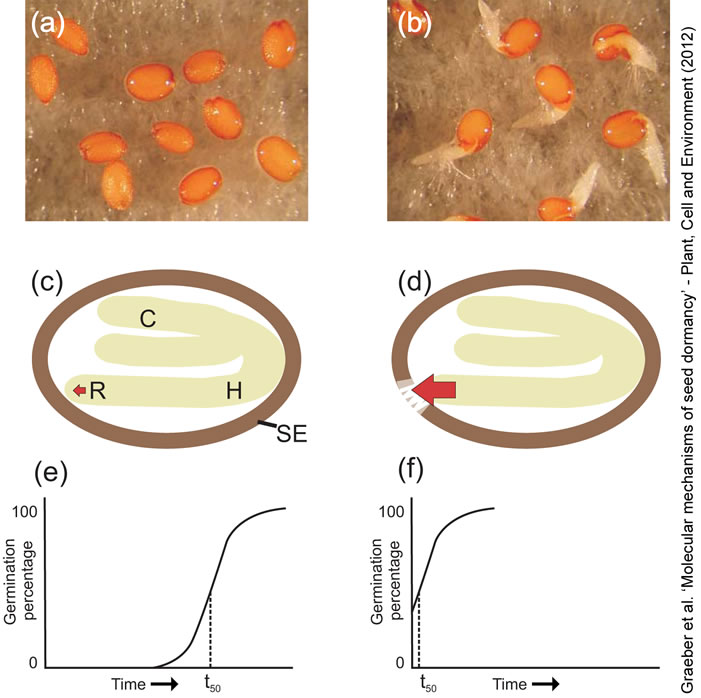Plant, Cell and Environment 35: 1769-1786 (2012)
Molecular mechanisms of seed dormancy
University of Freiburg, Faculty of Biology, Institute for Biology II, Botany / Plant Physiology, Schänzlestr. 1, D-79104 Freiburg, Germany (KG, GLM)
Department of Plant Breeding & Genetics, Max Planck Institute for Plant Breeding Research, Carl-von-Linné-Weg 10, 50829 Cologne, Germany (KN, EM, WM)
School of Biological Sciences, Plant Molecular Science, Royal Holloway, University of London, Egham, Surrey TW20 0EX, Uk (GLM);
Web: 'The Seed Biology Place' - www.seedbiology.eu
*Equal contribution
Received 2012; Revised 2012; Accepted 2012
Article first published online: 19 June 2012
DOI 10.1111/j.1365-3040.2012.02542.x

Figure 1. A comparison of dormant and non-dormant seeds.
(a,b) Freshly harvested seeds of the Arabidopsis accession Cape Verde Islands are dormant and do not germinate after 3 days imbibition in the light (a), whereas after-ripened seeds have lost dormancy and germinate under the same conditions (b).
(c,d) The growth force of the radicle (indicated by the red arrow) does not overcome the strength of the surrounding tissues in dormant seeds (c), but weakening of the surrounding tissues (seed envelopes) and an increased growth force of the radicle enables germination (d). The embryo is shown in green and the seed envelopes in brown. C, cotyledons; H, hypocotyl; R, radicle; SE, seed envelopes (testa and endosperm).
(e,f) Germination over-time diagrams of a dormant seed batch with a high t50 value (e) and a non-dormant seed batch with a low t50 value (f).
| Article in PDF format (1.2 MB) |
|
|
|
The Seed Biology Place |
Webdesign Gerhard Leubner 2000 |